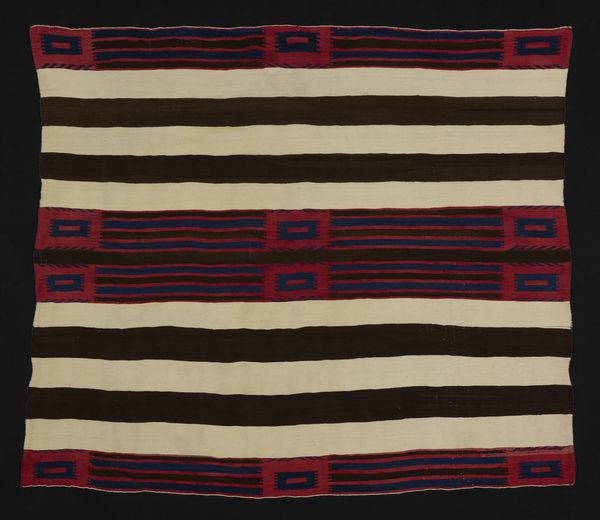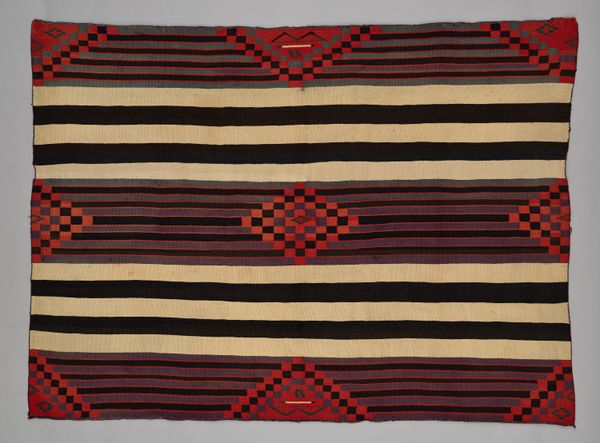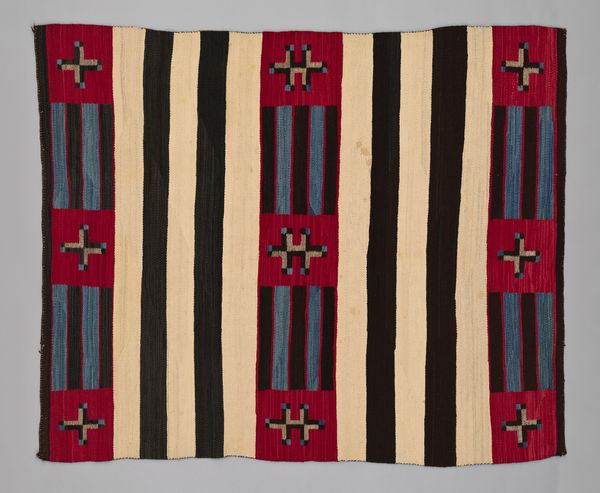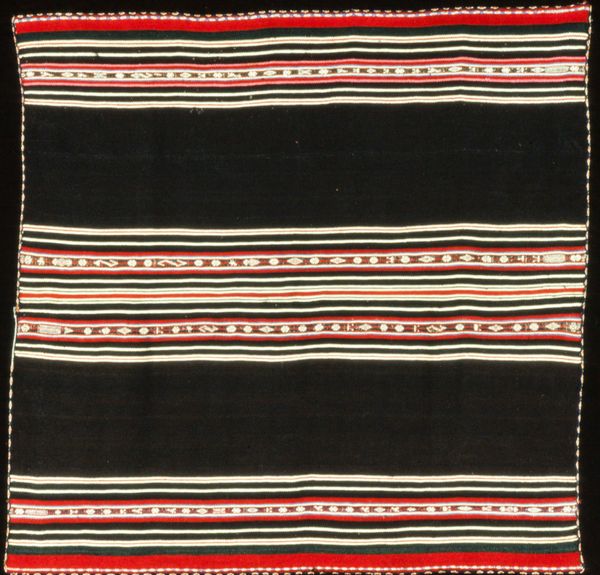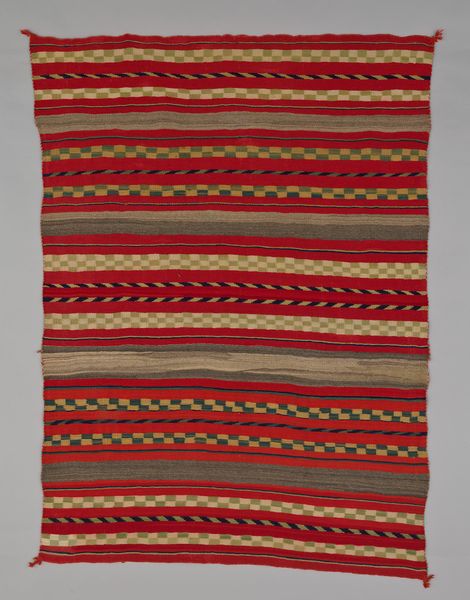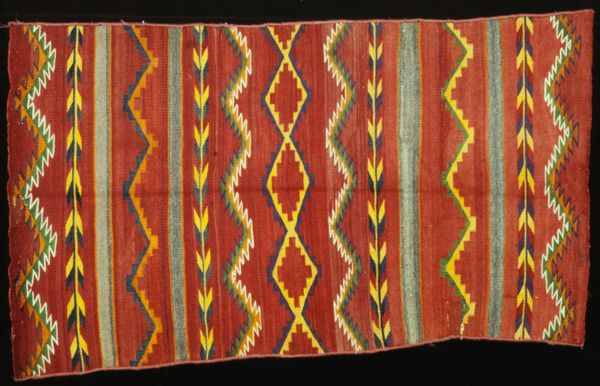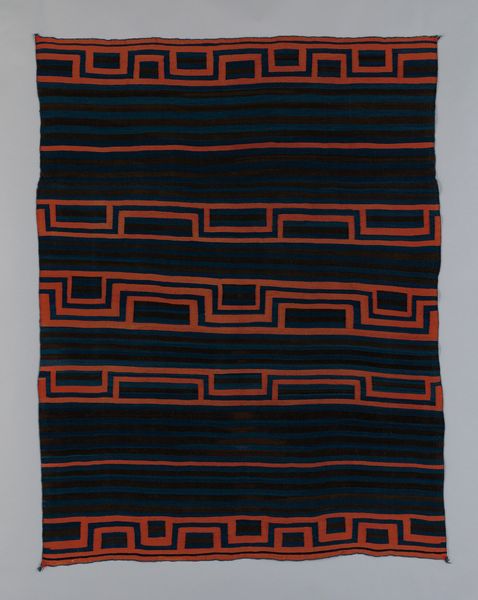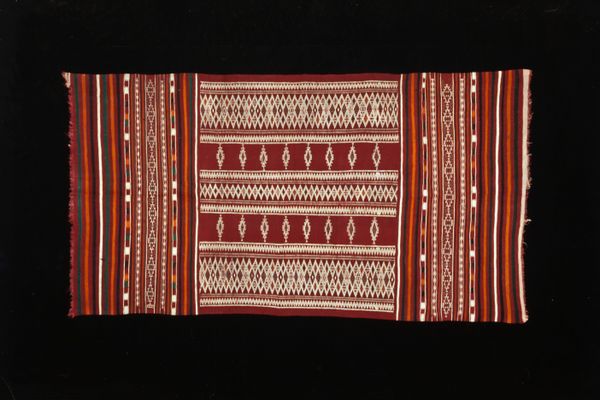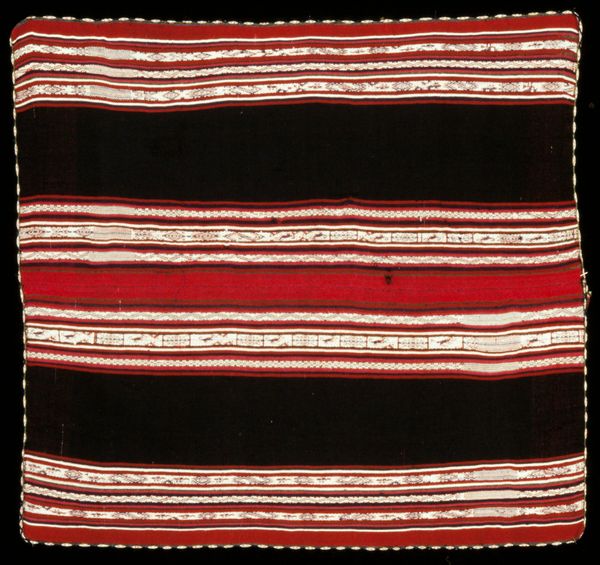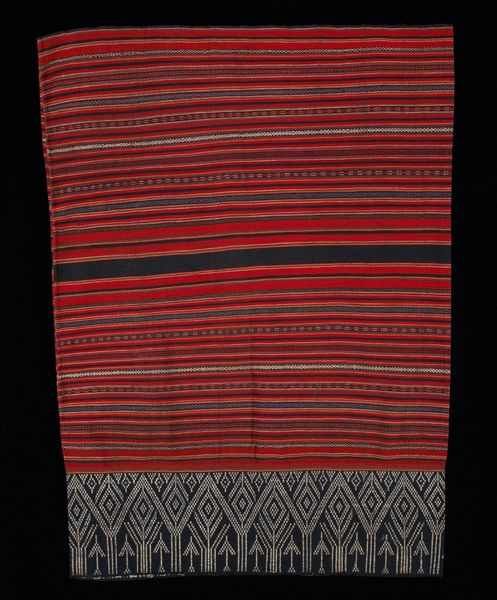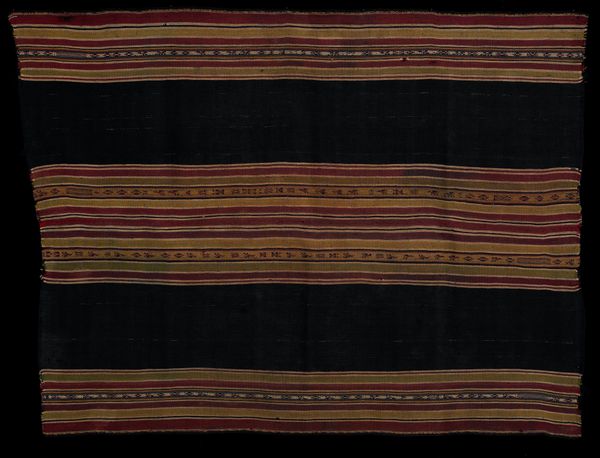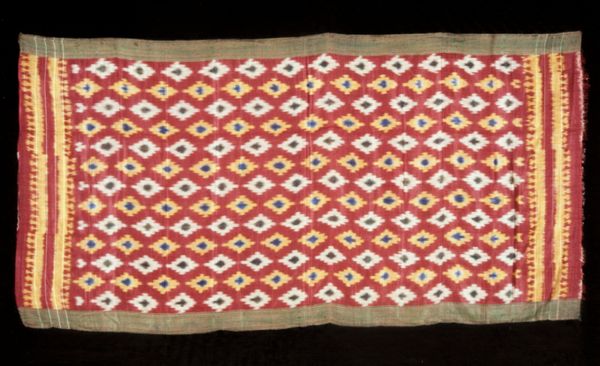
fibre-art, weaving, textile
#
pattern heavy
#
fibre-art
#
weaving
#
textile
#
geometric pattern
#
abstract pattern
#
geometric
#
fabric design
#
repetition of pattern
#
pattern repetition
#
textile design
#
imprinted textile
#
layered pattern
#
combined pattern
#
indigenous-americas
Dimensions: 149.6 × 173.9 cm (58 7/8 × 68 1/2 in.)
Copyright: Public Domain
Curator: Look at the incredible "Chief Blanket (Third Phase)", woven by a Navajo (Diné) artist circa 1860-1865. It’s a beautiful example of a textile in wool. Editor: It certainly commands attention. The deep reds contrasted against the white and dark stripes... There's something inherently powerful about the graphic simplicity of it. Curator: "Chief Blanket" designs developed in phases. The earliest ones featured simple horizontal stripes, evolving over time to incorporate these bolder geometric elements like diamonds and half-diamonds. Blankets like these were traded across vast distances, becoming prestige items signaling wealth and status, worn as clothing by both Native Americans and non-Native leaders. Editor: The diamond is certainly a key image. Visually anchoring the whole design... Diagonals can symbolize movement or transition. Perhaps it suggests a person of high rank who moves deftly in trade and diplomacy. And those dark, bold horizontal stripes – could those signify established order or tradition, maybe even trade routes or trails? Curator: That is an interesting perspective, given that Navajo weaving traditions were heavily impacted by encounters with Spanish and Mexican weavers and the availability of new materials like commercially dyed wool. It’s a fascinating blend of indigenous aesthetics and global trade. By this third phase of the "Chief Blanket," certain styles became fashionable on the market and popular amongst a diverse population of buyers and consumers. Editor: You can see the cultural exchange vividly expressed. And despite its geometry, I see how it connects back to indigenous traditions with abstracted symbols pulled from nature or cosmology. Everything resonates with history but with something more too. Curator: Exactly. These textiles represent far more than just physical coverings. They're woven documents of a complex and often fraught history of cultural encounter and exchange. I also wonder how indigenous artists felt when non-Native individuals used art made within the Native American community, as a symbol of the appropriation and celebration of conquest and erasure. Editor: It does bring an awareness to our historical position to observe the beautiful pattern-heavy and striking work in front of us. I'm especially intrigued now by how a simple textile design could carry such an emotional charge. Curator: Indeed, it gives us so much to think about beyond just its surface beauty, including a history of artistic production and use under political struggle. Editor: Absolutely. There’s an almost endless dialogue embedded in those threads.
Comments
No comments
Be the first to comment and join the conversation on the ultimate creative platform.
